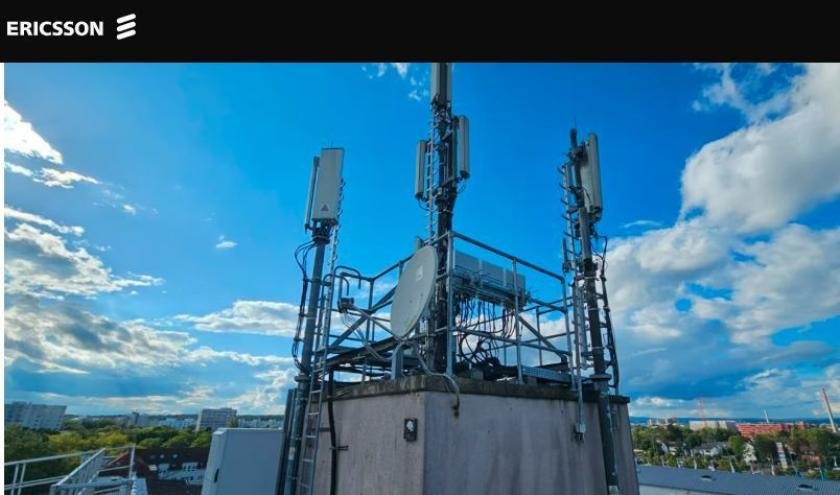Ericsson, the leading telecom equipment maker with revenue of $23.5 billion, has made several announcements at the Mobile World Congress (MWC) 2025 in Barcelona.

Aduna
Aduna, a global telecom venture in collaboration with Ericsson, has announced the addition of e& as an equity partner.
e& Group CEO Hatem Dowidar said the partnership will allow e& to integrate its network APIs across its operations in the Middle East, Asia, Africa, and Europe, enhancing Aduna’s global platform. With operations in 20 countries, e&’s inclusion will expand Aduna’s reach in emerging markets and support the adoption of standardized network APIs for developers.
The collaboration aims to enhance service quality, security, and monetization opportunities for developers and enterprises. Aduna CEO Anthony Bartolo welcomed e&’s participation, highlighting its potential to drive innovation. Aduna’s growing ecosystem, based on CAMARA APIs, includes major telecom operators such as AT&T, Vodafone, Verizon, and Deutsche Telekom.
DNB
Digital Nasional (DNB), Malaysia’s national 5G network operator, has deployed Ericsson’s Enterprise Virtual Cellular Network (EVCN) at its Kuala Lumpur headquarters, making it the world’s first 5G-first office environment. DNB employees will use 5G-enabled laptops managed through EVCN, integrated with Microsoft Intune, Entra ID, and DNB’s 5G network, ensuring secure and seamless mobile work connectivity.
As part of Malaysia’s digitalisation efforts, DNB aims to replace traditional Wi-Fi with 5G to enhance security, efficiency, and scalability while collaborating with mobile network operators to extend EVCN services to enterprises and government agencies. CEO Datuk Azman Ismail emphasized the role of 5G in driving Malaysia’s digital transformation, while Ericsson’s David Hagerbro highlighted the collaboration as a milestone in enterprise connectivity, enabling businesses and government agencies to embrace secure, scalable, and digital-first solutions.
o2 Telefonica
o2 Telefonica has launched its first Cloud RAN network using Ericsson technology, marking the world’s first implementation of Ericsson Cloud RAN in a commercial 5G standalone network. The initial deployment includes eight mobile phone masts in Offenbach, Germany, providing 5G connectivity to o2 Telefonica customers.
Mallik Rao, Chief Technology & Enterprise Officer at o2 Telefonica, emphasized Cloud RAN’s role in enhancing network efficiency and customer experience.
Daniel Leimbach, Head of Customer Unit Western Europe at Ericsson, highlighted the partnership’s role in advancing open network architectures and fostering innovation. The Cloud RAN deployment began with traditional RAN technology before transitioning to a 5G standalone system at the 3.6 GHz frequency.
By replacing proprietary hardware with software running on commercial hardware, the Cloud RAN approach increases adaptability and scalability.
Qualcomm
Ericsson and Qualcomm Technologies have conducted an interoperability device test on the n101 frequency band, dedicated to 5G railway communications in Europe. Using a mobile test platform powered by the Qualcomm X85 5G Modem-RF and an Ericsson radio prototype, the companies tested a FRMCS 1900 MHz 5G radio with a unique 10MHz TDD channel bandwidth and an uplink-balanced frame structure designed for railways.
This marks a significant milestone in the development of the Future Railway Mobile Communication System (FRMCS), which will replace the aging GSM-R system by 2030. FRMCS, based on 5G NR Standalone, will introduce 5G Advanced RAN software, enhancing railway communication capabilities.
Ericsson’s development of an 8×8 Massive MIMO radio demonstrates its commitment to mission-critical network technology and smooth migration from GSM-R. The company is also preparing for the FRMCS 5G pan-European trials, known as MORANE2, initiated by the International Union of Railways (UIC) to improve rail transport capacity, digitalization, and competitiveness across the EU.
Intel Xeon 6
Ericsson has conducted its first Cloud RAN call in lab environments using the latest Intel Xeon 6 SoC integrated with Dell PowerEdge servers, marking a key milestone in Cloud RAN development. This achievement highlights Ericsson’s collaboration with Intel and Dell to create efficient Cloud RAN solutions.
The Intel Xeon 6 SoCs provide enhanced performance, improved processing efficiency, and AI-driven capabilities, enabling optimized network operations. The integration of Intel’s Advanced Matrix Extensions (AMX) and Advanced Vector Extensions (AVX) enhances AI and machine learning capabilities within the network infrastructure.
giffgaff
Ericsson and mobile virtual network operator giffgaff, a subsidiary of Telefonica UK, have migrated Ericsson’s Mediation system from an on-premises setup to Amazon Web Services (AWS). This transition enhances giffgaff’s ability to collect, process, and standardize network data, improving network performance, service quality, and billing accuracy while increasing operational efficiency. As MVNOs seek scalable and cost-effective solutions, giffgaff is prioritizing cloud migration to reduce total cost of ownership and enhance agility.
The deployment demonstrates Ericsson’s capability in delivering cloud-native telecom applications optimized for AWS. Steve McDonald, Chief Operating & Technology Officer at giffgaff, emphasized the importance of reliable cloud-based systems in ensuring seamless service for over 4 million customers. Ericsson Mediation’s microservices-based architecture enables rapid deployment of new capabilities, allowing MVNOs like giffgaff to scale efficiently based on evolving demands.
SoftBank
Ericsson and SoftBank have announced progress in their joint research on AI-RAN integration and signed an MoU to extend their collaboration. Their work focuses on merging AI and Radio Access Network (RAN) technologies to enhance telecommunications.
Key achievements include demonstrating Ericsson Cloud RAN software on NVIDIA GH200 Grace Hopper Superchip and defining an architecture for orchestrating AI and RAN applications on the same infrastructure.
Moving forward, the partnership will explore offloading RAN functions to GPUs using NVIDIA’s platform, prototyping AI and RAN workload orchestration, and optimizing AI computation for robotic applications using Ericsson’s compute offloading framework.
Baburajan Kizhakedath
